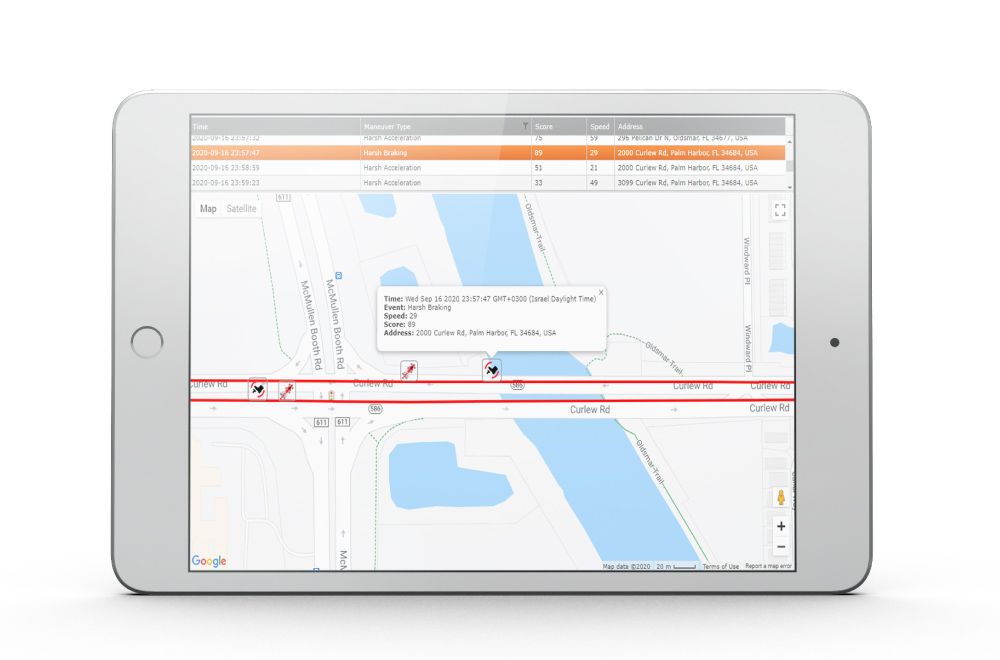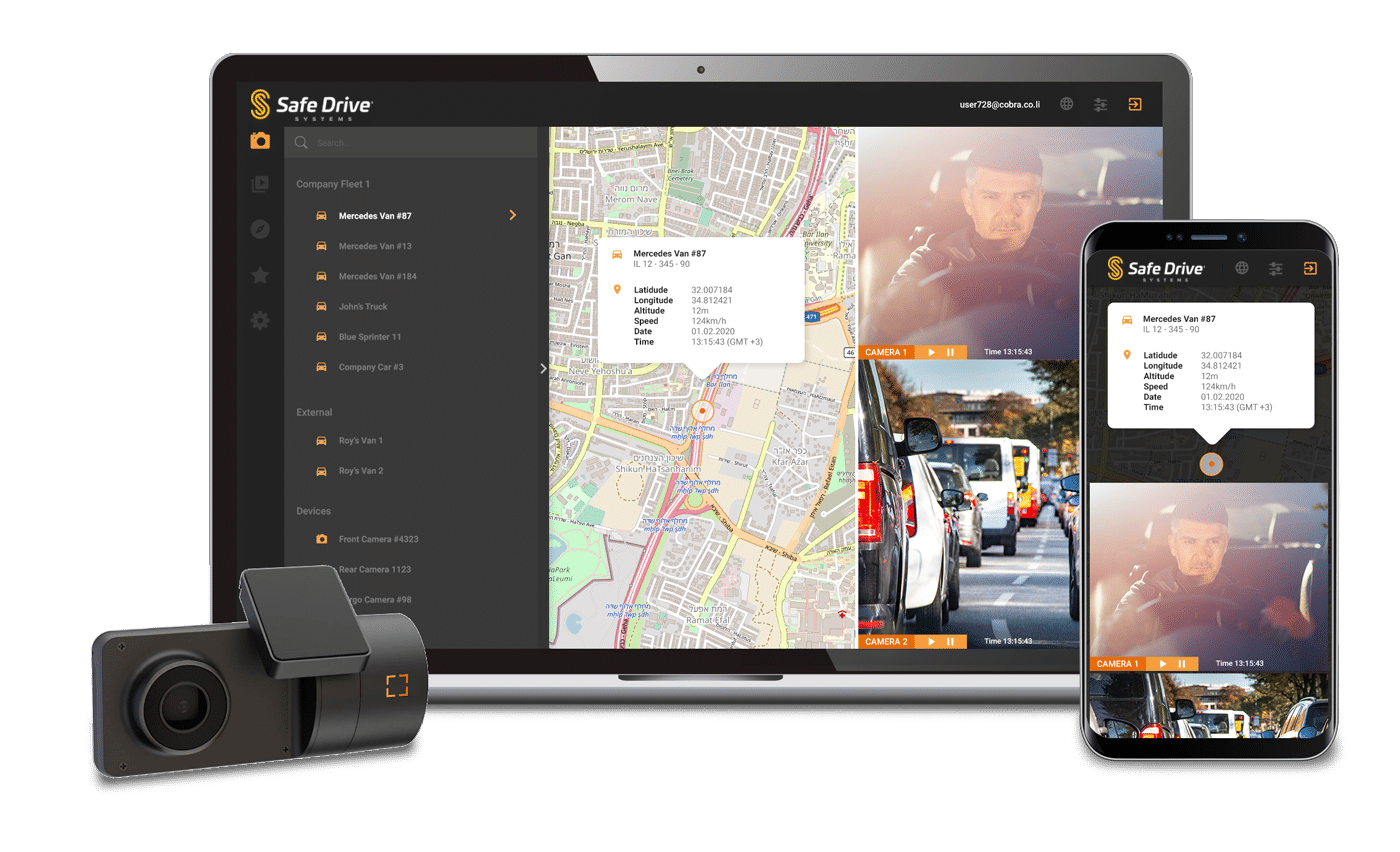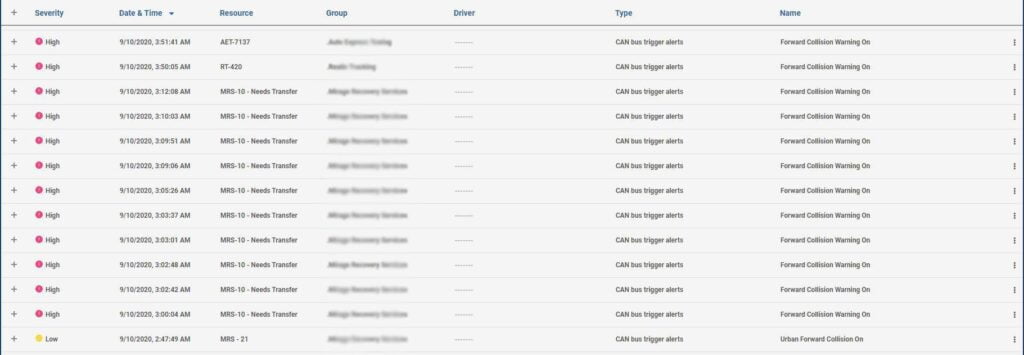Data Powered Fleet Maintenance
Leverage the power
of data to reduce costs
and minimize downtime
As the owner or manager of a commercial fleet, you‘re faced with unique challenges. No two fleets are the same:

Different roads and alternating routes

Drivers of various
skill level and driving
culture
skill level and driving
culture

Range of goods
carried dictates
driving style
carried dictates
driving style

Distance covered
presents different
challenges
presents different
challenges
Your fleet’s maintenance and service needs are unique and must be treated as such.
Safe Drive Systems offers a unique fleet maintenance solution, integrating

A radar collision prevention system

Telematics

Real-time dash camera

AI cloud video

ELD
Thanks to our unique integration between the hardware inside the vehicle (the radar collision prevention system), our fleet management software (telematics), AI cloud video, ELD and real-time dash cam, we’re able to help you address all of your data needs in one platform.
Our solutions will provide you the opportunity to maintain your fleet with ease, while greatly cutting repair costs and improving its longevity.
This one of a kind integration enables a holistic solution to managing the fleet and its activities, empowering you with:

Real time data

Easy access from ONE PLACE

Increased productivity, decreased time waste

Direct impact on your bottom line
>> Our
Solutions
Telematics | ELD | Real-Time Dash Camera | Radar Collision Prevention
Your fleet’s maintenance and service needs are unique and must be treated as such. In order to best optimize feet maintenance management, you must never rely on anyone’s advice, driver experience or gut feeling.
Key factors to proper data-based fleet maintenance
For many fleet managers, data may be intimidating as it’s a double-edged sword. In most cases, fleet managers don’t properly collect or store data. They end up using only a tiny fraction of it, consequently questioning if they should be doing it at all. The rest of the data gathered either remains “dark” (untagged, unorganized and thus useless) or becomes ROT (Redundant, Obsolete and Trivial).
Therefore,
it is essential to understand

what data you should
be collecting
be collecting

how you should be collecting
and accessing it
and accessing it
With a bird’s eye view of your fleet and its status, you will be able to properly allocate budget and organize your workforce and routine maintenance, making sure both time and money are well spent. Not to be forgotten, a healthy vehicle will increase its longevity, further improving your return on investment.Let’s break that down:
What data you should be collecting for optimal fleet maintenance?
>> Fleet Management System (Telematics) data:
- Harsh braking and rapid acceleration:

The visual shows the acceleration and deceleration of vehicles over a specific timeframe, giving insight into possible rapid acceleration and harsh braking.
Harsh braking and its counterpart, rapid acceleration, are some of the best ways to notice aggressive driving. Not only does such driving increase the risk of brand and reputation damage, but it also increases the risk of actual damage and collisions, as well as potential legal costs.
By monitoring harsh braking and rapid acceleration, you can save on fuel and reduce possible brake damage. Furthermore, you can increase the longevity of your tires and reduce the overall wear and tear of your vehicles. In the end, this will lead to healthier driving habits which will increase your overall vehicle health while reducing fleet maintenance costs.
>> Fuel consumption

The fuel consumption chart enables you to cross reference the time a vehicle spent active, the distance it travelled, and the amount of fuel it spent during that time, including the average fuel consumption per mile.
Monitoring fuel consumption might be a no-brainer, but the benefits of measuring this key performance indicator go way beyond what meets the eye.
While the obvious reason to monitor is to be able to tell when you need to order more fuel, thus being more efficient with each individual vehicle, a more low-key advantage is being able to notice discrepancies in consumption.
A sudden surge in use, for example, could be a symptom of a malfunctioning vehicle, fuel theft or something else altogether. Knowing what normal use looks like will help you better determine what “abnormal” use looks like and will enable you to react on time before potential costs start adding up.
>> Driver scoring (ECO)

Safety data and general vehicle information are combined to create an overall driver score, allowing you to better understand which drivers could be further trained to reduce maintenance cost.
This is where data pooling, in contrast to siloing, really begins to shine. Combining all the various data bits on the driver’s behavior (harsh braking, rapid acceleration, hours of service, dash camera data, keeping in lane, driving within speed limit, driving too close to the vehicle in front), you can rate, or score the driver.
As a general rule of thumb, the better the driver, the lower the cost of fuel and the easier the fleet maintenance management.
This data can help you understand which drivers need more training in order to reduce their cost towards the fleet.
>> Real-time video AI dash camera data
Easily accessible real-time dash camera feed gives you a first-hand view of your vehicles and drivers at work.
Maintaining a healthy fleet is more than just organizing maintenance schedules and making sure all hardware components are fixed before they cause serious headaches. It’s also about avoiding collisions and potential driving fines, as well as protecting brand reputation.
Dash camera data, in real-time, can be of enormous help. You can leverage this to monitor your drivers for distractions, as well as irresponsible and dangerous driving (texting, taking their eyes off the road, driving under influence, reckless driving, or falling asleep at the wheel).

>> ELD data
- Driver hours of service

Driver hours of service will tell you for how long a vehicle was active, how much distance it crossed, as well as the average distance per hour.
This is another key performance indicator that frequently gets overlooked. Driver hours of service are enforced by law in most countries around the world and as such - are often only used to avoid fines or legal issues. However, it can and it should be used for a lot more than just navigating through the legalities.
It can be used in preventative maintenance - to prevent damages and excess maintenance costs before they occur. By tracking every driver’s hours of service within your fleet management system, you can assess potential collision risk (due to fatigue, for example) as well as potential wear and tear to the vehicle.
>> Radar-based collision prevention system data



